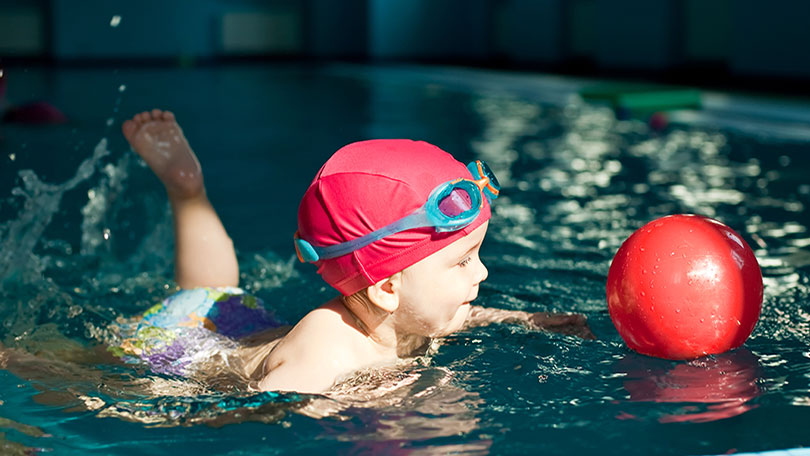Swimming is not only a fun and engaging activity for children but also a vital life skill. Whether it’s their first time in the water or they’ve been swimming for years, ensuring their safety during swimming lessons is crucial. By being informed about the safety protocols at swimming schools, parents can provide their children with a secure and enjoyable learning experience. Here’s an overview of essential swimming class safety guidelines every parent should consider.
1. Certified Instructors and Lifeguards
The quality of the instructors and lifeguards is paramount in maintaining a safe environment during swimming lessons. Swimming instructors should hold certifications from reputable organizations, such as the American Red Cross or the YMCA. These credentials typically cover CPR, first aid, and water safety, equipping instructors with the skills needed to handle emergencies effectively.
Lifeguards are another key safety feature at swimming classes. These trained professionals are responsible for observing the pool area and responding swiftly if any issues arise. Before enrolling your child, confirm that certified lifeguards are on duty during each class and ensure they’re easily accessible.
2. Maintaining Proper Child-to-Instructor Ratios
Adequate supervision is a crucial aspect of safety in swimming lessons. The child-to-instructor ratio varies depending on the age and swimming ability of the children. For instance:
- Infants and Toddlers (6 months to 3 years): Smaller ratios, typically around 3:1 or 4:1, are vital for providing individual attention.
- Preschoolers (3-5 years): Ratios of 4:1 or 6:1 are typical for this age group, although some programs may adjust based on swimming ability.
- Older Children (6+ years): Classes with children who are more comfortable in the water may have a ratio of up to 8:1.
It’s important to check with the swimming school to ensure their child-to-instructor ratios align with your expectations for safety and supervision.
3. Understanding Pool Rules and Regulations
Every swimming facility should have a clear set of rules to ensure a safe environment. Common rules include:
- No running around the pool to avoid falls.
- No diving in shallow areas to prevent neck and head injuries.
- Showering before swimming to maintain water cleanliness.
- Appropriate swimwear to prevent distractions or safety issues.
Ensure your child is familiar with these rules before attending their class, as following them is key to ensuring safety.
4. Emergency Plans and First Aid
Accidents can happen even in the most well-prepared environments, which is why having clear emergency protocols in place is essential. A good swimming facility should provide:
- Emergency communication: Easy access to phones for quick contact with emergency services.
- First aid kits: Fully stocked kits for treating minor injuries.
- Rescue equipment: Lifebuoys, poles, and other devices positioned around the pool for quick access during emergencies.
Ask if the instructors and lifeguards have advanced first aid training and if the facility practices emergency action plans regularly.
5. Monitoring Water Conditions and Temperature
Water temperature and cleanliness are vital aspects of maintaining a safe and comfortable environment for children in swimming lessons. Pools should be kept clean, regularly tested for water quality, and maintained at an appropriate temperature.
- Water temperature: Younger children usually require warmer water (around 86°F-88°F or 30°C-31°C) for comfort, while older children can manage cooler temperatures (78°F-82°F or 25°C-28°C).
- Water quality: The pool should be regularly tested for chlorine and pH levels to prevent skin and eye irritation.
Before signing up, inquire about the facility’s maintenance practices and water temperature regulations.
6. Required Safety Gear for Swimming Classes
In addition to the usual swimwear, some classes may require additional safety gear, such as:
- Life jackets or floatation devices: Essential for beginners or young children who may not yet be confident in the water.
- Goggles: Not always required but can help children feel more comfortable and improve visibility under the water.
- Swim caps: These may be necessary to keep hair out of the water, promoting hygiene and comfort.
Always confirm with the swimming school what equipment is necessary for your child’s specific class.
7. Skill Development and Safety Progression
Swimming lessons should be structured to build a child’s confidence and skill level gradually. Safe swimming instruction focuses on progression, allowing children to develop their skills at a pace that ensures both competence and safety.
- Beginner stages: Children learn fundamental skills such as floating and blowing bubbles, becoming comfortable with the water.
- Intermediate stages: As confidence grows, children begin learning strokes and breathing techniques.
- Advanced stages: Older children work on more complex skills like diving and endurance swimming.
This progressive approach ensures that children are never placed in situations where they feel overwhelmed, making their swimming education both safe and effective.
8. Involving Parents in the Process
Many swimming programs for younger children encourage parents to participate, either by being in the water with their child or by observing closely from the poolside. This involvement ensures that you can support your child emotionally and stay informed about their progress.
If your child is older, staying near the pool during lessons can help you monitor the class and remain aware of the safety measures in place. Knowing where instructors and lifeguards are located can make a difference in case of an emergency.

Tinggalkan Balasan